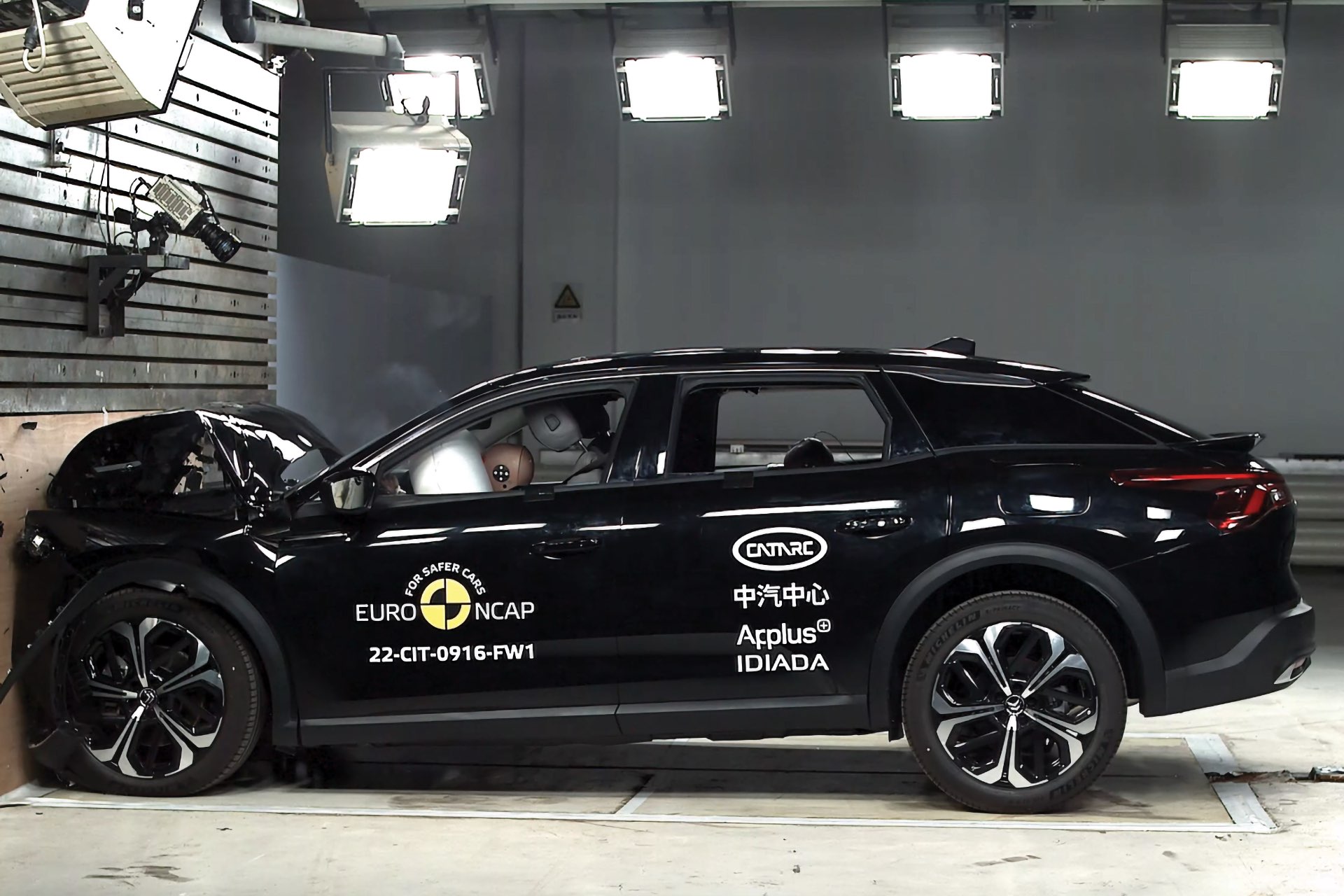ANCAP has released a five-star safety rating for the Citroen C5 X, applicable to all variants. The rating, based on testing of left-hand-drive models by sister agency Euro NCAP, is nonetheless one star higher than the four-star C5 X sold in Europe owing to a more advanced autonomous emergency braking (AEB) system fitted to Australian-supplied vehicles.
“The improved active safety specification and performance sees the safety assist score for Australian-sold C5 X vehicles rise to 84 per cent, which is well within our requirements for five stars,” said Carla Hoorweg, CEO of ANCAP.
ADULT OCCUPANT PROTECTION
ANCAP said the passenger compartment of the C5 X remained stable in the frontal offset (MPDB) test. Protection of the driver and front passenger chest and lower legs was adequate, with good protection offered to other body regions.
The front structure presented a moderate risk to occupants of an oncoming vehicle in the MPDB test (which evaluates vehicle-to-vehicle compatibility), and a 1.96-point penalty was applied.
In the full width frontal test, protection was marginal for the chest of the driver and rear passenger, and adequate for the neck of the rear passenger. Good protection was offered for other critical body regions.
In the side impact test, protection offered to all critical body regions was good. In the more severe oblique pole test, the driver chest protection was marginal.
A centre airbag to prevent contact between the heads of front seat occupants in side impacts is not available. Prevention of excursion (movement towards the other side of the vehicle) in the far side impact tests was assessed as marginal for both the vehicle-to-vehicle impact scenario and the vehicle-to-pole scenario.
CHILD OCCUPANT PROTECTION
In the frontal offset test, dummy readings indicated good protection for all critical body areas of both child dummies, apart from the neck of the 10-year dummy where protection was rated as adequate.
In the side impact test, protection of both child dummies was good for all critical body areas.
The C5 X is fitted with lower Isofix anchorages on the rear outboard seats and top tether anchorages for all rear seating positions.
Installation of typical child restraints available in Australia showed most child restraints could be accommodated in most rear seating positions, but one of the selected Type A convertible seats could not be correctly installed in rearward facing mode using the Isofix anchorages.
VULNERABLE ROAD USER PROTECTION
The C5 X has an ‘active’ bonnet with sensors detecting when a pedestrian has been struck and actuators lifting the bonnet to provide greater clearance from stiff components in the engine bay. The vehicle was tested with the bonnet in the raised position and good or adequate results were recorded over most of the bonnet area, with marginal and poor results recorded at the base of the windscreen and on the stiff windscreen pillars.
Protection provided to pedestrians’ legs was good at all test locations, but protection provided to the pelvis was poor.
The AEB is capable of detecting and reacting to pedestrians and cyclists. The system offered adequate performance in pedestrian test scenarios but does not react to vulnerable road users in reverse (AEB back-over) or turning scenarios. Good performance was seen in cyclist test scenarios with collisions avoided or mitigated in most scenarios.
SAFETY ASSIST
The C5 X is fitted with a lane support system with lane keep assist, emergency lane keeping functionality and blind spot monitoring, while the AEB is capable of functioning at highway speeds.
The camera / radar fusion AEB provides better performance for car-to-car scenarios than the camera-only system standard in Europe. Citroen provided evidence that the camera / radar fusion system and vehicle performance for the Australian specification C5 X is the same as the closely related DS 4, for which official tests were conducted by Euro NCAP, and this is reflected in the C5 X scoring.
Tests of the AEB (car-to-car) showed good performance, with collisions avoided or mitigated in all scenarios, including AEB Junction Assist where the test vehicle can autonomously brake to avoid crashes when turning across the path of an oncoming vehicle or pedestrian.
Tests of LSS functionality showed some good performance, including in several of the more critical emergency lane keeping test scenarios.
A speed assistance system is standard equipment on the C5 X, identifying the local speed limit and allowing the driver to set the speed accordingly.
A driver drowsiness monitor system is fitted as standard and a seatbelt reminder is fitted to all seating positions, but occupancy detection is only fitted for the front passenger seat.
